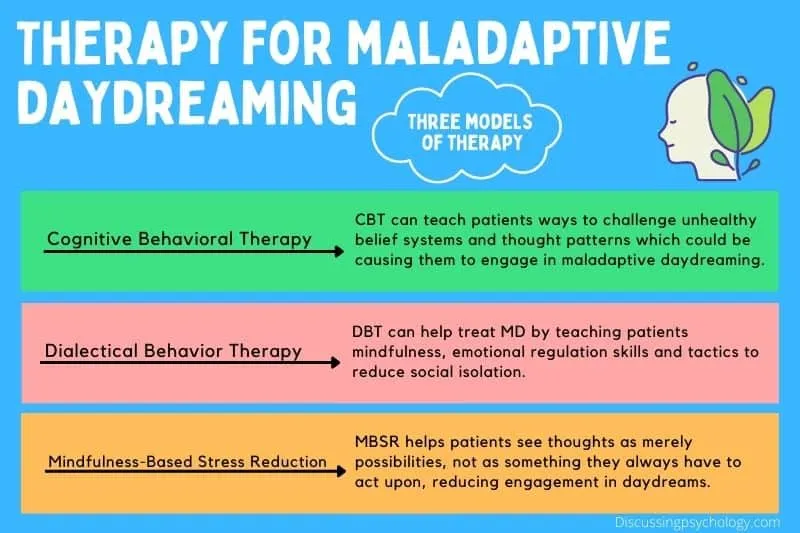Maladaptive Daydreaming with Mindful Meditation:

Maladaptive daydreaming can feel like a double-edged sword. On one hand, it’s an escape—a safe haven from reality. But on the other hand, it can trap you, consuming hours of your day, pulling you away from the real world. So, how do you break free? One powerful tool that can help is mindful meditation.
Mindful meditation is about being present in the moment, fully engaging with your thoughts and feelings without letting them control you. It’s a practice that can help you regain control of your mind, steer away from excessive daydreaming, and live a more balanced life.
Understanding Maladaptive Daydreaming
What is Maladaptive Daydreaming?
Maladaptive daydreaming is a mental health condition where a person experiences excessive, vivid, and immersive daydreams that interfere with their daily life. Unlike regular daydreaming, which can be a harmless and even enjoyable activity, maladaptive daydreaming becomes a problem when it starts to disrupt normal functioning.
Symptoms of Maladaptive Daydreaming
People who struggle with maladaptive daydreaming often lose track of time as they get lost in their fantasies. They may find it difficult to focus on tasks, leading to problems at work, school, or in personal relationships. Other symptoms include a strong urge to continue daydreaming, difficulty controlling these fantasies, and using daydreaming as a way to cope with negative emotions.
Causes of Maladaptive Daydreaming
The exact causes of maladaptive daydreaming aren’t fully understood, but several factors might contribute. These include trauma, loneliness, or a need to escape from stress. Some people may also have a predisposition to intense imagination, which can make them more prone to developing this condition.
How Does Maladaptive Daydreaming Impact Daily Life?
Effects on Mental Health
Maladaptive daydreaming can lead to significant mental health issues. It often coexists with conditions like depression, anxiety, and obsessive-compulsive disorder (OCD). The constant pull to escape into fantasies can make it difficult to engage in real-life experiences, leading to feelings of isolation and despair.
Effects on Personal Relationships
Personal relationships can also suffer. Those who engage in excessive daydreaming may withdraw from social interactions, preferring the company of their imagined worlds. This withdrawal can lead to misunderstandings, conflicts, and a sense of disconnect from loved ones.
Identifying Triggers of Maladaptive Daydreaming
Common Triggers
Certain situations or feelings can trigger maladaptive daydreaming. For some, it might be stress, boredom, or loneliness. Others might find that certain types of music, books, or movies can spark an intense desire to daydream.
Situational and Emotional Triggers
Situational triggers might include being in an environment where daydreaming is easy, such as during a long commute or while lying in bed. Emotional triggers can involve feelings of sadness, frustration, or even excitement, which prompt the mind to escape into a fantasy world.
Introduction to Mindful Meditation
What is Mindful Meditation?
Mindful meditation is a practice that involves focusing your attention on the present moment while calmly acknowledging and accepting your feelings, thoughts, and bodily sensations. It’s a form of meditation that encourages you to be aware of your surroundings, your inner self, and the thoughts that arise without judgment.
Basic Principles of Mindful Meditation
The core of mindful meditation is about being present. It’s not about emptying your mind but rather observing your thoughts as they come and go. By doing so, you create a space between yourself and your thoughts, allowing you to respond rather than react impulsively.
Different Types of Mindful Meditation
There are various forms of mindful meditation, including focused attention meditation, where you concentrate on a single point, like your breath, and open monitoring meditation, where you observe all experiences without focusing on any single one. Both approaches can be beneficial depending on your needs and preferences.
The Benefits of Mindful Meditation
Mental Health Benefits
Mindful meditation is known to reduce stress, anxiety, and symptoms of depression. By fostering a greater sense of self-awareness, it helps individuals recognize and manage negative thought patterns, making it an effective tool for mental well-being.
Physical Health Benefits
In addition to mental health benefits, mindful meditation can improve physical health. Regular practice has been linked to lower blood pressure, improved sleep quality, and enhanced immune function. The relaxation response triggered during meditation helps reduce the harmful effects of stress on the body.
The Role of Mindful Meditation in Addressing Maladaptive Daydreaming
How Mindful Meditation Helps Control Daydreaming
Focusing on the Present Moment
One of the main challenges of maladaptive daydreaming is the mind’s tendency to wander. Mindful meditation teaches you to focus on the present moment, which can help reduce the frequency and intensity of daydreaming. By training your mind to stay in the here and now, you can gain better control over your thoughts.
Enhancing Self-Awareness
Mindful meditation increases self-awareness, helping you recognize when you are slipping into a daydream. This heightened awareness allows you to catch yourself before getting too lost in your fantasies, making it easier to redirect your attention to more productive activities.
Practical Steps to Start Mindful Meditation
Beginner Techniques
If you’re new to meditation, start with simple techniques like focusing on your breath. Sit in a comfortable position, close your eyes, and pay attention to the sensation of your breath entering and leaving your body. Whenever your mind starts to wander, gently bring your focus back to your breath.
Creating a Meditation Routine
Consistency is key to reaping the benefits of mindful meditation. Try to set aside a specific time each day for your practice. Even just 5-10 minutes can make a difference. Over time, you can gradually increase the duration as you become more comfortable with the practice.
Combining Mindful Meditation with Other Strategies
Cognitive Behavioral Therapy (CBT)
How CBT Complements Meditation
Cognitive Behavioral Therapy (CBT) is another effective approach for managing maladaptive daydreaming. CBT helps individuals identify and challenge distorted thought patterns, while mindful meditation supports this process by fostering a non-judgmental awareness of these thoughts. Together, they create a powerful combination for overcoming maladaptive daydreaming.
Developing Healthy Habits
Importance of Sleep and Nutrition
Good sleep and proper nutrition play a crucial role in mental health. Lack of sleep can increase the likelihood of daydreaming as your mind seeks escape from exhaustion. Eating a balanced diet can help regulate your mood and energy levels, reducing the need to retreat into daydreams.
Physical Activity as a Supportive Measure
Regular physical activity can also help reduce maladaptive daydreaming. Exercise releases endorphins, which improve your mood and help manage stress. Engaging in physical activities can also distract your mind from daydreaming and ground you in the present moment.
Seeking Professional Help
When to Consider Therapy
If maladaptive daydreaming is severely impacting your life, it might be time to seek professional help. A therapist can provide guidance and support tailored to your specific needs, helping you develop strategies to manage your daydreaming more effectively.
Finding the Right Therapist
When looking for a therapist, consider someone who has experience with maladaptive daydreaming or related conditions like OCD or anxiety. The right therapist will understand your struggles and work with you to create a treatment plan that incorporates mindfulness, CBT, and other relevant techniques.
5 symptoms of maladaptive daydreaming
Identifying maladaptive daydreaming can be tricky, because daydreaming is a normal part of life for many people. However, there are specific signs that help distinguish maladaptive daydreaming from regular daydreaming. Recognizing these symptoms can be the first step in addressing maladaptive daydreaming.
1. Triggered by real experiences
Maladaptive daydreaming is often set off by real-life events or stimuli. For example, hearing a certain song, watching a movie, or experiencing a particular emotion can trigger an intense and elaborate daydream. These triggers lead to daydreams that are more vivid and detailed than typical, passing thoughts.
2. Unconscious facial expressions and movements
While daydreaming, people may display facial expressions or make movements that they’re not aware of. These can include smiling, frowning, whispering, or even moving their hands as if they’re interacting with someone in their daydream. These physical expressions are outward signs of the intense, immersive nature of their daydreams.
3. Repetitive body movements
Physical movements are another symptom of maladaptive daydreaming. This might look like pacing back and forth, rocking, or other repetitive actions while lost in a daydream. These movements can be a way of physically manifesting the daydream or helping to stay immersed in it.
4. Trouble sleeping
The intense nature of maladaptive daydreams can keep the mind overly active, making it hard to relax and fall asleep. Not sleeping well can lead to a cycle of tiredness and further daydreaming as you seek a mental escape from fatigue.
5. Long periods of daydreaming
Unlike normal daydreaming, which is typically brief and fleeting, maladaptive daydreaming can last for longer periods and sometimes hours at a time. Extended duration of daydreaming is a key indicator and can lead to significant disruptions in daily life.
Overcoming Challenges in Practicing Mindful Meditation
Common Obstacles to Meditation
Dealing with Restlessness
Restlessness is a common challenge for beginners in meditation. If you find it hard to sit still, try shorter sessions or incorporate movement-based meditation like walking meditation. The key is to start small and build up your practice gradually.
Managing Expectations
Another common obstacle is expecting immediate results. Mindful meditation is a practice that takes time to develop. Be patient with yourself and remember that progress is made over weeks and months, not days.
Staying Consistent
Building a Sustainable Practice
To maintain consistency, integrate meditation into your daily routine. Whether it’s first thing in the morning or before bed, having a set time can help make meditation a habit.
Tracking Progress and Adjusting Techniques
Keep a journal of your meditation practice. Note how you feel before and after each session and any challenges you face. This can help you track your progress and adjust your techniques as needed, ensuring that your practice continues to evolve.
Overcoming maladaptive daydreaming requires a multi-faceted approach, with mindful meditation being a key component. By staying present and aware, you can gain control over your daydreams and bring more balance into your life. Remember, it’s about progress, not perfection. Take it one day at a time, and soon you’ll find yourself more grounded in reality.
- Also Read :
- Ultimate Keto Diet Plan: Simple Steps for Effective Results
- Release Trauma with Somatic Exercises Today!
- Discover Somatic Exercises for Effective Weight Loss
- Strengthen Your Lower Back with These Gym Equipment
- How Did Kelly Clarkson Lose Weight? Her Secrets Revealed
- 10 Effective Couples Therapy Exercises for Stronger Bonds
- What are some fun and challenging exercises for a couples workout routine
FAQ’S:
Is Maladaptive Daydreaming a Mental Disorder?
While not officially classified as a mental disorder, maladaptive daydreaming is a condition that can significantly impact a person’s life, warranting attention and management.
Can Mindful Meditation Cure Maladaptive Daydreaming?
Mindful meditation is not a cure, but it is a powerful tool that can help manage and reduce the frequency of maladaptive daydreaming by promoting awareness and control.
How Long Does It Take to See Results from Meditation?
Results can vary, but many people start to notice benefits within a few weeks of consistent practice. The key is to be patient and persistent.
Are There Any Risks Associated with Mindful Meditation?
Mindful meditation is generally safe, but some individuals may experience heightened emotions or discomfort when starting. It’s important to approach the practice with self-compassion and seek guidance if needed.
